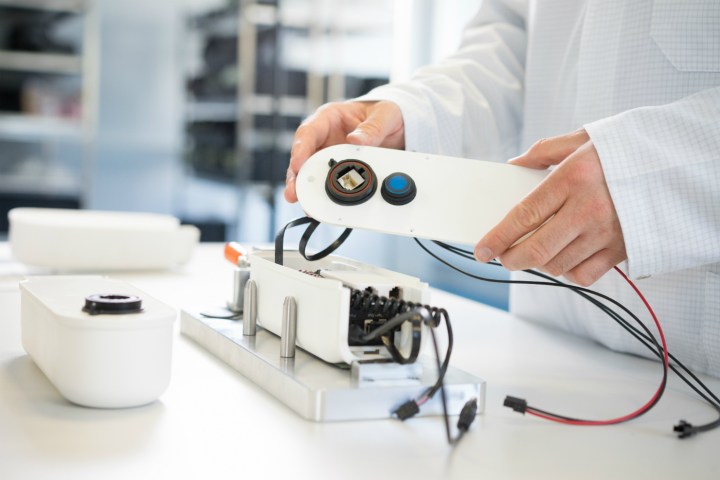
As drones become more accessible and inexpensive, this trend has increased, prompting prison administrators to seek ways to combat the drones. The problem is that the drones are often not even spotted by guards, who do not have the technology to detect them. Spotlights, armed guards, and even cameras are proving ineffective at stopping the drone incursions.
Drone operators are capable of maneuvering the drone contraband deliveries directly to cell windows, or less visible areas of the prison yard, to deliver drugs and contraband to inmates with an efficiency that Amazon is still dreaming about.
Dedrone created a device to help prisons get rid of their drone delivery problem by detecting the flying gadgets as they approach. They offer a product called the DroneTracker, which is a 17-inch-wide device resembling a white plastic ceiling fan, with a central hub and four rounded arms extending out from the center. It has the ability to track drones within 1,640 feet in any direction, according to CNN Money.
The Dedrone can locate drones using multiple modes of detection. Microphones are equipped and programmed to identify the sound of a drone, while cameras use image detection to identify drones. Finally, radio frequency scanners identify communications between the drones and their ground controllers. The DroneTracker does only what the name implies, and has no countermeasures to stop a drone. DroneTracker recommends third-party solutions for this task.
When drones are identified, the prisons have a number of options available to them, depending on the local laws. Officers can wait for the delivery to complete and then confiscate it, or jammers can be engaged to bring the drone down. Jammers are illegal in many locales and can cause issues with WiFi, radio signals, and passing helicopters. Federal buildings and prisons have been able to get special permission to use jammers, though, so that may still be an option in a prison setting.
Interestingly enough, prisons are not the only customers hoping to stop drones. Dedrone reports that celebrities, airports, government buildings, and sports stadiums are all interested in keeping drones at bay, and expressed interest in the DroneTracker.


